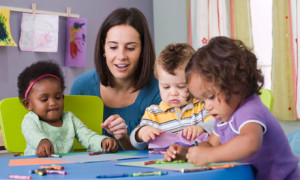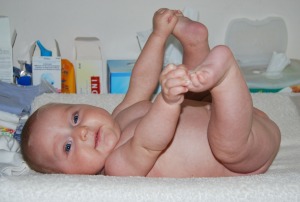Common Preschooler Injuries and Accidents
One of the worst fears any parent faces is an injury to their child. Unfortunately, despite
your best attempts at childproofing your home and other safety efforts, there are a variety
of common preschooler injuries and accidents you need to be aware of.
As far as accidental injuries go, burns occur regularly. A hot water heater can be the
culprit since preschoolers are very curious about the world around them and can’t always
tell what’s dangerous. Of course, there are other mishaps that involve lamps, matches,
steam from a pan and even bathwater if you’ve set the thermostat higher than 120 degrees
Fahrenheit.
Treating Burns
Treating burns means you’ll need to act quickly. Hold the affected area under cool
running water or hold a cold wet towel over the spot until the pain subsides. Smaller
blisters should be covered with a loose bandage or gauze. You’ll need to call the family
doctor if the burns are larger than 1⁄4 inch and occur on the genitals, face or hands. Don’t
take any chances and call 911 if the burns look deep with skin that appears brown or
white and covers more than one-tenth of your child’s body. After you’ve got the proper
care and these injuries have started to heal, it’s important to remember not to lance any
blisters yourself and to use an antibiotic cream on any areas where the skin does break
open.
For children six months to two years, the most common burn injury is scalding from hot
foods or liquids.
Bruising
Preschoolers are some of the most active children. Because they’re always jumping and
running as they explore their worlds for the first time, there’s bound to be the occasional
bruise that shows up. Bruising starts when smaller blood vessels near the surface of the
skin rupture. The common black-and-blue marking is generally caused by blood seeping
into the skin.
Generally, these small injuries heal on their own within one to two weeks, but an ice pack
applied in fifteen minute intervals during the first few days can keep the swelling down.
You can give your preschooler the right dose of ibuprofen or acetaminophen if the bruise
is especially painful.
Scrapes and Cuts
As you can imagine, there are many ways your little one can get scrapes or cuts. If there’s
bleeding involved, you’ll need to apply pressure with a clean cloth anywhere from three
to five minutes until it stops. Running the affected area under lukewarm water and then
patting it dry will cleanse a superficial wound and if the injury is dirty or caused by an
animal scratch, you can lather it with soap.
When the skin is broken, over-the-counter antibiotic ointment coupled with a bandage
or gauze usually works, but if the bleeding won’t stop after several minutes with direct
pressure, you’ll need to call your pediatrician or emergency services right away. Any
large piece of missing skin should be wrapped in a clean cloth and placed in a bag with
ice in the hopes it can be reattached.
Keeping the tone of your voice relaxed and distracting your child with toys or books will
help the first aid process go smoothly.
How did you treat childs injury? Share it with us.
Read more info like this at All My Children.
Author: Rob Starr









